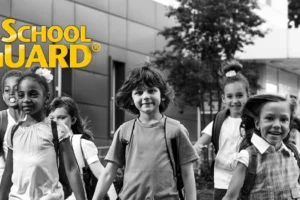As tragic school shootings become a more common occurrence, it is increasingly apparent that nationwide emergency systems need to be put in place and taken seriously. There is generally little or no warning of a killer’s intentions, and when it does happen, the post-shooting analyses prove time and again that the most important factor in stopping an active shooter is first responder notification time. Response time averages up to 18 minutes according to Homeland Security. Reducing notification time is the key.
Purpose of This Blog
Please understand, this blog is in no way meant to place blame or make light of the Parkland school shooting that was so tragic, there are few words to describe the horror and the fallout that is still unfolding. We want to share how this school shooting happened; how many steps to safety were involved, how many precious seconds were wasted before 911 was ever called, and how long it took first-responders to get to the property before the killer was later arrested. Our purpose here is two-fold:
1). To share the painful analysis of what went wrong that fateful day of the Parkland school shooting in February 2018. This will shine some light on the “why” and the “how.”
2). To highlight an emergency alert app, SchoolGuard, that when activated, will alert off-premise first-responders immediately – possibly before the first shot is ever fired and without putting those who call a Code Red or try to phone 911 in harm’s way.
We can’t change the past, but with knowledge, communication, and technology, we can change the future and increase school and child safety. Our hearts break for those who are part of this tragedy – for the 17 who died that day and the 2 teenagers who recently took their own lives, and their loved ones, the 14 injured, and everyone nationwide who was touched.
Please read the following with an open heart and recognize that we can’t change peoples’ intent to harm, but we can change how we prevent and react to K-12 schools’ and Universities’ on-campus shooter emergencies and save lives.
Broward County Florida, Public Safety Findings Overview
In February 2018, 17 people lost their lives and 14 were wounded at Marjory Stoneman Douglas High School (MSDHS), in Parkland, Florida. The gunman, Nikolas Cruz, a former student with a self-proclaimed goal of being a “professional school shooter,” entered the campus at 2:19 p.m. through an unlocked and unstaffed gate. A campus monitor saw him enter through the unlocked doors of building 12 with what appeared to be a rifle bag. Inside the building, he pulled out an AR-15 style semi-automatic rifle and started shooting. In 1 minute and 39 seconds, Cruz had already shot 21 victims, 9 of whom were fatally wounded.
Late Code Red ● Ineffective PA ● Building 12 Chaos
The First Code Red Alert – A “Code Red” means there is an imminent danger and protective action is needed. It is a school-wide PA announcement that alerts teachers and their students to assume a protective position in their classrooms and stay in this position until more instructions are given. The first Code Red at MSDHS was finally called by another campus monitor 3 minutes and 16 seconds after Cruz fired the first shots and was half way down the third-floor hallway shooting students. By this point, he had already shot most of his victims.
The lack of a formal Code Red or similar active assailant response policy in the Broward County Public Schools led to school personnel not knowing or clearly understanding the criteria for calling a Code Red, who should call it, or when it should be called. The lack of a called Code Red because there was no policy, little training, and no drills, left students and staff vulnerable to being shot. And some were shot because they were not notified to lockdown. This was most evident on the third floor of building 12. There were also no Code Red drills at MSDHS in the year preceding the shooting.
Ineffective PA and Communications Systems – In this case, there were no PA system speakers in the school building hallways and exterior areas, which prevented effective use of the school’s intercom system to communicate the Code Red and provide directions to students and staff. The lack of an effective communication system prevented building occupants from moving to a place of safety.
Not one teacher in building 12 stated that they heard the Code Red being called over the PA. The teachers reacted to the sound of either gunfire or the fire alarm. (The Code Red announcement over the PA was not made until Cruz had finished shooting all his victims and was entering the third-floor teacher’s lounge, which was too late to meaningfully notify anyone).
Some teachers said that they could use the PA to contact the front office but did not want to risk harm making their way to the PA button. The classrooms lacked effective two-way communication systems and very few school personnel had school-issued radios.
Fire Alarm Confusion – Furthermore, the fire alarms activated because either a beam of light disrupted by the muzzle flash made them sound or smoke from the gun and/or dust was created by the ceiling tiles from the percussion of the gunshots. No pull stations were triggered or pulled anywhere on campus.
The fire alarm caused confusion among students and staff in building 12. Some treated the event as a fire alarm (evacuation) and some treated it as an active shooter situation (hiding in place). The lack of a called Code Red contributed to students and staff not treating this incident as an active shooter event and that put students and staff at risk because they used evacuation protocols, not active assailant response protocols.
All teachers in building 12 who sheltered in place did so because the first thing they heard was gunfire, not because they were notified of an active shooter on campus.
Inadequate Video Cameras, Training, and Access – Exterior video cameras were inadequate to cover the exterior of building 12 and other areas of the Stoneman Douglas campus and most school personnel were inadequately trained in how to operate the camera system. This lack of familiarity and training adversely affected law enforcement response and hampered victim rescue.
Additionally, the school district does not allow Broward County Sheriff’s Officers (BSO) real-time access to its school camera systems. Law enforcement’s inability to view live cameras in building 12 hindered law enforcement response and caused officer safety issues because law enforcement was unable to determine whether Cruz had departed the building.
911 Rerouting ● First-Responder Reaction Time
Parkland 911 calls from cellular phones – then and still today – are routed to Coral Springs. This call transfer system prohibits BSO from receiving direct 911 calls from its service area in Parkland. Not being able to take direct 911 calls creates a situation, as it did on February 14, 2018, where there is an information void adversely affecting an effective law enforcement response.
Though this exact 911 emergency protocol may only be relevant to Broward County, Florida, other districts who contract with other local authorities for 911 services may also be at risk. This situation also reinforces the benefit of the SchoolGaurd smartphone app that could’ve been used by authorized teachers or staff members the second they suspected a threat, alerting the nearest on-duty and/or off-duty first-responders. No phone call, confusion or delays.
The following steps explain why Coral Springs waited 4 minutes and 22 seconds from the time it received the first call of shots fired at MSDHS until it dispatched its first Coral Springs police officer.
1. All Parkland 911 callers from cell phones who need police assistance must explain their emergency to the Coral Springs dispatcher first.
2. Then, the dispatcher tells the person to standby while Coral Springs calls Broward County Regional Communications.
3. The Coral Springs dispatcher then tells the BSO dispatcher that they have a caller on the line with a police emergency.
4. Finally, the 911 caller repeats the reason for needing the police all over again to the BSO dispatcher.
Additionally, Coral Springs and BSO have independent CAD systems, so there is no electronic data-sharing between Coral Springs and BSO; this affected law enforcement response and caused information voids and silos. Because BSO SWAT could not effectively communicate via radio, SWAT had to use cell phones and “runners” to communicate in-person due to the radio failures. (These same radio problems also happened during BSO’s response to the Ft. Lauderdale Airport shooting in 2017). There was law enforcement confusion as to who was going to enter the building, if the killer was still in the building, how to get everyone out, and whose role it was to perform safety, triage, and defensive tactics.
Conclusions & Hard Lessons
Upon a final, in-depth analysis and review by the Public Safety Commission, it is clear that the entire situation – from Cruz being able to enter through an unlocked gate to the Code Red, the 911 call and first responders’ confusion at the scene – was fraught with mistakes. There was also a massive lack of training and technology, faulty communication systems, and human error.
Draft Findings and Recommendations in the Initial Public Safety Commission Report were submitted to the Governor, Speaker of the House of Representatives, and Senate President, January 1, 2019. Among the 158-page extremely detailed report of the incident were comprehensive lists of recommendations specifically for MSDHS, as well as for nationwide implementation. The goal is to lower the probability of more lives lost by every means possible.
Recommendations & Technology
There are too many detailed recommendations in the Public Safety Commission Report to list here but simple technology like SchoolGuard and Hero911® apps can solve the majority of them. According to Homeland Security, on a nationwide average, it takes first responders 18 minutes to arrive at an active shooter incident. The only true defense against this horrific threat is to reduce law enforcement response time to these incidents. With SchoolGuard® and CampusGuard911™, affordable technology exists to greatly improve the chance of saving lives – literally in an instant, with the touch of a screen.
Features & Benefits of the Guard911 Apps
– Places a panic button in the hands of any and ALL approved staff with a compatible smartphone.
– A single touch of the smartphone screen instantly alerts all on- and off-duty federal, state, and local law enforcement officers within proximity to the emergency through the free Hero911® Network app.
– Creates a direct link between Guard911 users and law enforcement officers. No more waiting for 911 dispatchers to convey messages and ask questions when every second counts.
– Speed dials 911, which in this case may have still resulted in a delay, however, the Hero911 alert would’ve already gone out to every officer and first-responder in the area, prompting immediate action.
– Instantly sends an alert to ALL approved users on school or campus property; no more hoping for the PA system to work or someone getting to the PA system button to alert others.
– Instantly alerts all other protected locations within 5 miles for lockdown and life-saving preventative measures.
– The Intruder Mapping feature displays a mapped location of where the alert originated from for situational awareness to all recipients.
– One of the main recommendations of the report was a better Response Plan and access to it; SchoolGuard has a dedicated space to upload individual response plans.
– Invisible to patrons, non-users, and others so akiller will not know who has it and if it’s been used.
– Ability to receive alerts only – for situational awareness and training purposes.
– Can be activated intra-office or on surrounding grounds within the geofence.
– There is nothing hardwired, so no chance of wires being cut or electrical malfunctioning.
– Enough school staff and teachers – including campus monitors and security – should have Gurad911, so if one person happens to not have his or her phone on their person or nearby, someone else will.
“We have a single focus – to provide a simple, early-warning system for armed intruder tragedies that saves lives.”
Guard911 – When Seconds Save Lives®
The only true defense against the new reality of school shootings is to utilize technology to get help as fast as possible. With the average shooting incident lasting only minutes and the multitude of lives lost before first responders can even get to a grade school, high school, university, or a business, every second is the difference between life and death.
In 2013, Guard911 was formed by law enforcement and technology experts with a deep psychological approach to these emergencies. Our goal is to get the first 1 or 2 officers on scene as quickly as possible to neutralize the threat and save lives. No other emergency app offers the full scope of Guard911’s instant school and community-wide communication. We are passionate about helping you and your children stay safe and stop the loss of life when an active killer means harm. Contact us today and we will happily answer any of your questions and get your facilities set up on the Guard911 app network.
Sources Cited:
Homeland Security Report
Stoneman Commission’s MSDHS Public Safety Commission Report





